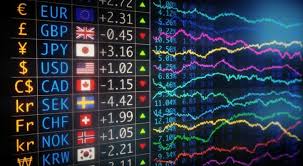
Understanding Forex Trading Sessions and Their Impact on Trading Strategies
Forex trading sessions are crucial components of the foreign exchange market, influencing currency movements and trading strategies. With an average daily turnover exceeding $6 trillion, currency trading occurs 24 hours a day, segmented into various trading sessions. Knowing when to trade is paramount for success, and forex trading sessions Trading Broker AR can help you navigate this dynamic market effectively.
The Four Major Forex Trading Sessions
The forex market is divided into four primary trading sessions, namely the Sydney session, the Tokyo session, the London session, and the New York session. Each of these periods has distinct characteristics, trading volume, and volatility, leading traders to strategize according to the time of day.
1. Sydney Session
The Sydney session kicks off the trading day at 10 PM GMT and runs until 7 AM GMT. While it is the least volatile of the four sessions, it lays the groundwork for the trading day. Major pairs such as AUD/USD, NZD/USD, and USD/JPY often see activity during this session. As traders open and close positions, the market begins to gain momentum and sets the tone for the subsequent sessions.
2. Tokyo Session
Following the Sydney session, the Tokyo session opens at 12 AM GMT and lasts until 9 AM GMT. Japan is a significant player in the forex market and typically experiences higher volatility during this time due to the overlap with the Australian session. Major pairs influenced during this time include JPY and AUD, alongside related cross pairs. This session is crucial for traders focusing on major Asian economies and typically sees movement in Asian stock markets.
3. London Session
The London session runs from 8 AM to 5 PM GMT and is often deemed the most important trading session. A significant portion of global forex trading occurs during this period, driven by European and American traders. As traders from London open their positions, the market often sees increased volatility and liquidity, especially in the GBP/USD, EUR/USD, and other major pairs. Most trading strategies capitalize on the high price movements and volatility characteristic of this session.
4. New York Session
The New York session starts at 1 PM GMT and continues until 10 PM GMT. Often, it overlaps with the London session for a few hours, leading to heightened volatility and trading volume. This session is particularly important for traders focusing on USD pairs. As the U.S. markets open and economic news is released, pairs like EUR/USD, USD/JPY, and GBP/USD tend to show substantial fluctuations. This is the ideal time for traders to capitalize on significant economic announcements.
Understanding the Overlaps
The overlaps between these sessions often create ideal trading conditions due to increased market activity. The two major overlaps are:
- Sydney and Tokyo: This period experiences increased trading activity as traders from both sessions engage in the market, allowing for ongoing trends to establish.
- London and New York: This overlap results in the highest trading volume and volatility, making it favorable for traders aiming to capture sudden price movements.

Choosing a Trading Session
Choosing the right trading session is vital for maximizing potential profits and minimizing risks. Here are some factors to consider:
- Currency Pairs: Identify which currency pairs you want to trade and at what times they are most active.
- Market Conditions: Understand if you prefer less volatile times for safe trading or are looking for high volatility opportunities.
- Your Availability: Align your trading times with your schedule; trading requires focus and attention, requiring you to be present during your selected session.
Common Trading Strategies for Each Session
Adapting your trading strategy according to the trading session can enhance your effectiveness. Here are common strategies deployed during each session:
1. Range Trading in Sydney
Since the Sydney session often sees less volatility, range trading works effectively. Waiting for price levels to test support and resistance levels can lead to winning trades.
2. Breakout Trading in Tokyo
With the Tokyo session showing increased volatility, breakout trading strategies can capitalize on price movements as new trends establish. Keeping an eye on major economic reports from Japan can optimize your entries and exits.
3. Trend Following in London
The London session often sees established trends. Implementing a trend-following strategy can leverage the market momentum to capture substantial price movements.
4. News Trading in New York
Due to the heavy release of U.S. economic data, the New York session presents an opportunity for news trading. Traders can place their positions before significant announcements, capitalizing on subsequent price swings.
Conclusion
Understanding forex trading sessions is key to optimizing your strategy and improving your trading outcomes. By recognizing the unique characteristics of each session and leveraging them according to your trading style, you can enhance your ability to navigate the complexities of the forex market. Whether you are a novice trader or an experienced professional, adapting your approach to fit the trading session can lead to favorable results. So take charge of your trading day and optimize your strategies based on the currency market’s ebb and flow!
